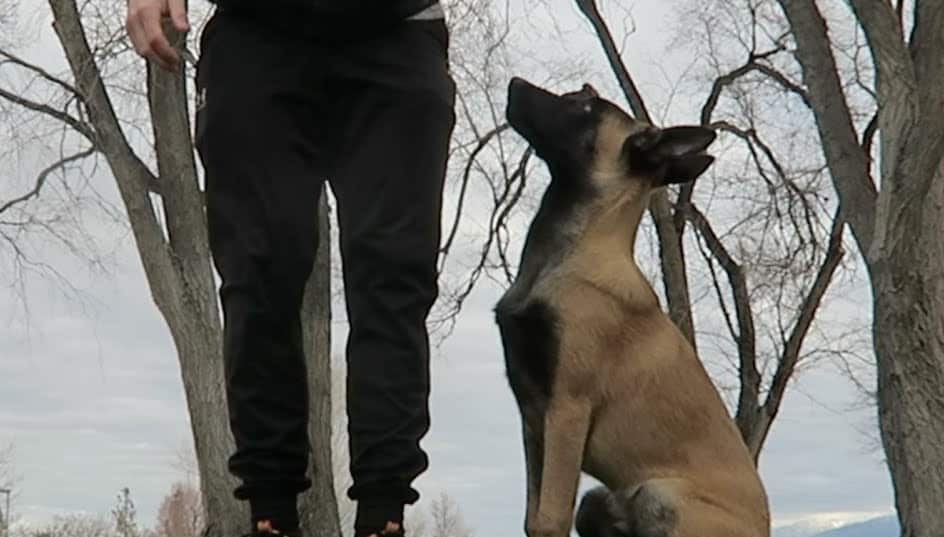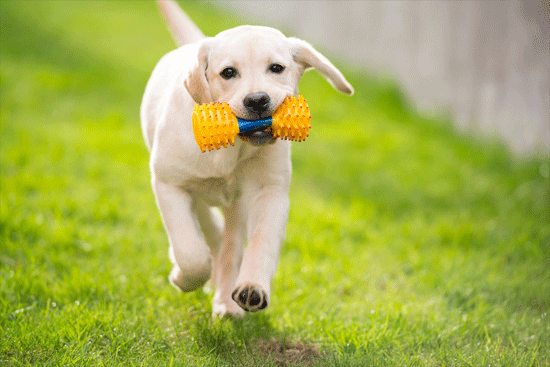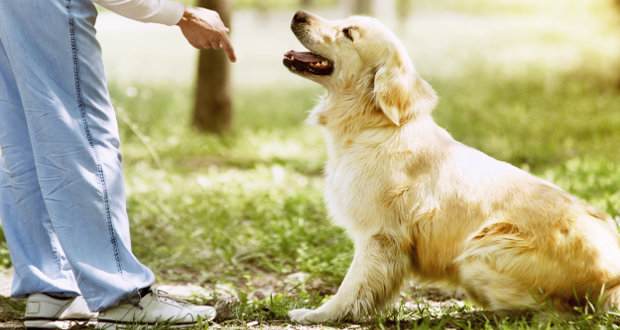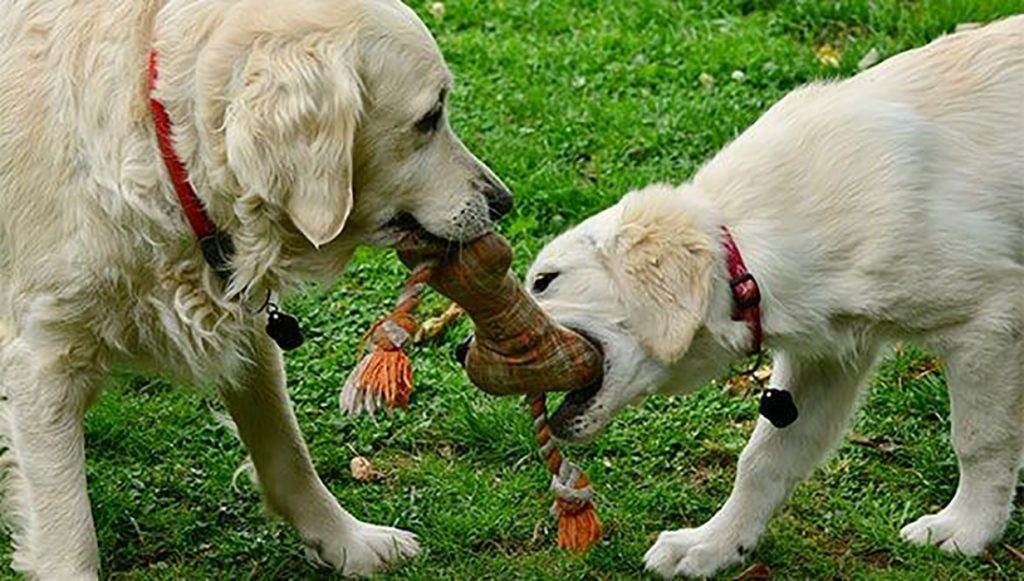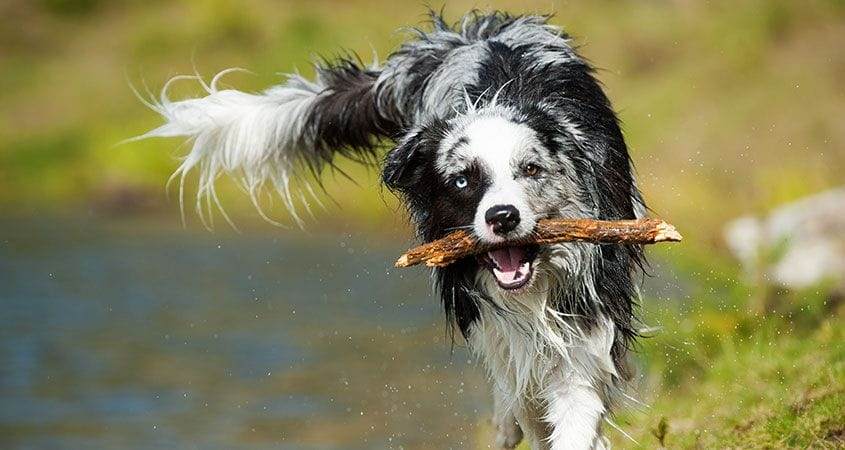When it comes to hunting, dogs are the best companion. They are very obedient and listen to their master. Compared to a human, the dog has a more sensitive sense of smell. They are also very agile and energetic. A dog can easily go to some places where regular people won’t feel comfortable to go.
People understood the capability of this animal and made them their hunting companion. Trained dogs always follow their master’s commands and go where directed. However, a dog is not so smart naturally. It needs proper training to bond with his master. Retriever Training is such a process that helps the dog understands his master’s command.
What is Blind Retrieve?
The instinct of a dog is to fetch fallen birds. They often do it easily in open space, where they can see the mark. However, the reality is that at the time of hunting people don’t get open space all the time. Trees, bushes, and murky water can obstruct the dog’s sight. At this time the dog isn’t able to see the hunted animal and it requires guidance from his master.
So, the blind retrieve is a guidance process by which the dog handler guides the dog in a certain direction for a retrieve. The process utilizes hand signals, voice, and whistle to guide the dog. The signals help to dog fetch in the direction of the hunted animal. The owner can also use his voice to give direction and whistle to call back the dog.
Dogs do not get the blind retrieves ability by default. It requires lots of training and the handler needs to build a positive bond with the dog. Only then the dog will follow the instruction of its handler. It is a fact that all dogs get smart with proper training. But few dog breeds have more blind retrieves ability than others.
Best dog breeds for Blind Retrieves
From the evolutionary point of view, all dogs have hunting skills. But some breed of dog can do the blind retrieves better than others. These dogs are born with thick fur and it works as a waterproof layer. The fur also protects them from cold. Most retriever dog has a good sense of smell. They can point the location of the hunted animal by sniffing. Here are some dog breeds that are famous for being a good retriever.
- Labrador retriever: It is one of the most popular house pets around the world and famous for their retrieving skills. This dog available in three colours black, chocolate, and pale yellow colour. The height of most Labrador retriever is around 22 inches and weighs around 65 to 80 lb. The dog has a short and dense coat cover. It is highly water-resistant and protects the dog from cold. It is very versatile on both ground and water.
- Nova Scotia Duck Tolling Retriever: The common nickname of this dog is Toller. It has originated in Canada. This dog is often used for hunting in the jungle area. The medium-length coat of this dog makes it resistant to colder climate and water. Most of them weigh around 50 lb and an average height of 20 inches. Dog of this species is available in varying shades of orange colour.
- Chesapeake Bay retriever: This species of dog grows quite large and they are very ferocious and aggressive as a retriever. Most of them weigh around 100 lb and 26 inches in height. This dog has a dense thick short coat. They are also very obedient and listen to their master. For this reason, giving them retrieve training is much easier.
- Curly-coated Retriever: The distinctive feature of this dog is its curly hair. Even though it looks very cute from its appearance but hunting is in its nature. The dog is very agile and easily retrieves small animals and birds in the jungle. This dog was originated in England and serving their human companion for centuries.
- Golden Retriever: This dog is very smart and always listens to its trainer. This breed of dog was originated in Scotland. They have a long and wavy coat. Most of them get 22 inches in height and weight around 70 lb. Along with water and jungle this dog can also retrieve well in snow. Many people also love them as house pets.
Components of Blind Retrieve training
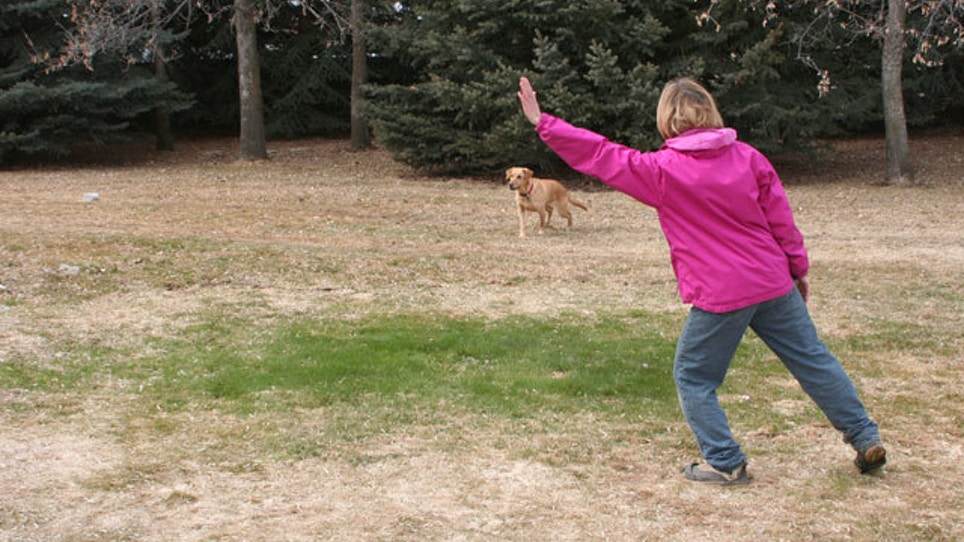
Even though it looks very easy from the outside, but it is a complex exercise for the dog. At the initial period of training, the dog will understand a limited number of commands. For this reason, at the beginning stage, it is recommended to start with basic training. Otherwise, the senses will overload and the dog will not listen to the trainer. Here are four essential components of blind retrieve training that the trainer needs to follow.
- Lining: The dog needs to know at which direction it needs to start the searching. Here the trainer guides a specific direction. The dog follows this direction for search. Even though it is a basic part of retrieve training, but many dog struggles at this first step. The owner needs to have lots of patience and encourage the dog to follow directions.
- Handling: With this step the dog learns to understand the hand signal of the trainer. After going up to a certain distance the dog needs to look back toward his owner and see which direction the handler is pointing. For this training exercise, the handler needs to use his voice, whistle, and hand movements.
- Hunting: Even though it is an instinct of every dog but being a house pet they don’t always attack other animals naturally. The trainer needs to evoke the instinct in the dog. For this, the trainer can use dummy toys. These toys give familiarity to the animal and birds and encourage the dog to hunt.
- Confidence: It is a big part of retrieve training. The dog must have confidence in his master and the master must have the same. It is an interconnected bond that forms over time. At the time of blind retrieve, the dog and his master perform together. The master functions as the eyes of the dog and guides him in the right direction.
Tools needed for Blind retrieve training
Every training exercise requires some equipment. So does for the blind retrieve training. The training is a confidence-building exercise between the dog and his handler. For this purpose, the trainer needs some tools to build communication with the dog. Here are some tools the owner must get before starting the blind retrieve training with the dog.
- Space: The blind retrieve is an exercise that dogs do at the time of hunting. The owner needs to have a wide-open space for the training purpose. Make sure the area allows dogs for training activities. The area must be 50 yards in length, where the dog can run freely. Make sure at this place there are few distractions for the dog. Otherwise, the dog will be distracted and won’t concentrate on the exercise.
- Bumper: It is a dummy object which represents the fallen animal or bird. It gives the dog a taste of hunting. Many people use fetch toys for them. However, it is recommended to use an appropriate bumper for the retrieve training exercise. Good bumpers are made with sturdy material and last long. There are many bumpers available in the market in the shape of duck and squirrel. Training a dog with these types of bumper is quite easy.
- Whistle: When in distance, the owner needs to communicate with the dog through sound. For this purpose, the trainer needs a whistle. The whistle needs to produce a distinctive loud sound so the dog can listen and respond to it. At the time of blind retrieve exercise, most handlers use it to stop or call back the dog from the jungle.
- Scent: Compared to other animal dog has a strong sense of smell; they can easily sniff out animals and birds by their smell. Many trainers take benefit of this ability and they train the dog to retrieve the animal by scent. There are multiple types of synthetic animal scent available in the market, which the trainer can use to train the dog for the blind retrieve.
Drills for Blind Retrieve training
Even though hunting is in a dog’s nature but they don’t do it by default. They require some training. This training regime can be segmented in small drills. These drills enhance the dog’s retrieve capability and bond them with a trainer. These drills are essential for blind retrieve training. Following these drills over multiple weeks will evoke the hunting spirit in the dog.
- Obedience: It is the first drill that the dog needs to master. An oversensitive or hyper dog is not good for a blind retrieve. The dog has to be calm and focus. Only then it could follow instructions from the trainer. Otherwise, the dog will wander around and run over the field without any guidance.
- Fetch: It is a basic part of retrieve exercise. In this drill, the dog brings out the object from a long distance. To practice this drill the trainer must have a bumper. At first, put the dog in a sitting position, then throw the bumper further away, and then let go of the dog to fetch it. After biting the bumper the dog has to bring the bumper to the owner.
- Whistle-stop: In this exercise, the dog needs to respond to the whistle sound. At first, the trainer let go of the dog then after going up to a certain distance, he needs to make the whistle sound. The dog needs to stop after listening to the whistle sound. It proves the obedience of the dog.
- Hand casting: This drill focuses on the hand movement of the trainer. It is advised to keep the palm open so the dog can see it and follow it. The dog needs to go to the direction where the hand is pointed. Most dogs don’t get this drill easily, and they need a couple of weeks of rigorous training.
- T-drill: In this drill, at first the dog needs to go straight pointed by the trainer. Then the trainer makes a whistling noise and stops. Then the trainer points his hand toward the left and instructs the dog to go toward the left direction. Then the trainer points his hand toward, right and instructs the dog to go toward the right direction. It is a bit complicated drill and the dog needs to be well aware of fetch, whistle-stop, and hand casting drill.
- Wagon wheel: This drill is the advanced form of T-drill. Here the dog learns to find hunted animals by following the hand signal of the trainer. Before starting the exercise, the trainer hides the bumper in a different location. Later at the time of exercise, the trainer helps the dog find these bumpers by hand casting and different signals.
- Pile: It is the last drill of blind retrieve training. With this drill, the dog learns to bring the bumper to the trainer. At the time of hunting, this activity will help the master gather all catches in one place. After mastering this drill, the dog is ready for hunting in the wild. The trainer can now take the dog for hunting and give him a real experience.
When Should You Start Training Blind Retrieve Drills
It is a scientific fact that young dogs learn tricks faster than older dogs. For this reason, start blind retrieve training when the dog is young. Most dogs above 12 weeks of age start to develop an understanding of the world. It is the best time to teach the dog various tricks like a blind retrieve. Here are some weekly activities that can help the dog grasp the concept of blind retrieve.
- 1st week: The trainer needs the first week to know the dog and its behaviour. Most of the time during this week, the dog plays with the trainer and learn more about each other. Many trainers use this time to teach basic obedience drills. The biggest challenge for the trainer is to make the dog sit in one place and make it ready to retrieve activity.
- 2nd week: During this week, the trainer needs to let the dog play with the bumper. At this time the dog learns the basic activity of hunting. It is advised to do fetch drill activity with the dog. The trainer can also practice whistle-stop with the dog. Most dogs take a little time to grasp the concept of whistle-stop. For this reason, they deserve a little treat when they get it correctly.
- 3rd week: If the dog responds well with whistle-stop and fetch. Then it is time to take the drilling activity next level, at this time practice hand casting and T-drill activity with the dog. During this time the dogs need to understand the hand command of the trainer and go to the pointed direction. The dog will only do this activity when it has confidence in the trainer.
- 4th week: It is the final stage of training. During this week, the trainer needs to concentrate on pile and wagon wheel drills. A dog familiar with hand casting and T-drill activity won’t take much time to master these activities. After finishing these drills the dog will have much more confidence. The trainer can take the dog in the wild to give him an experience of real hunting and blind retrieve.
Tips for Blind Retrieve training
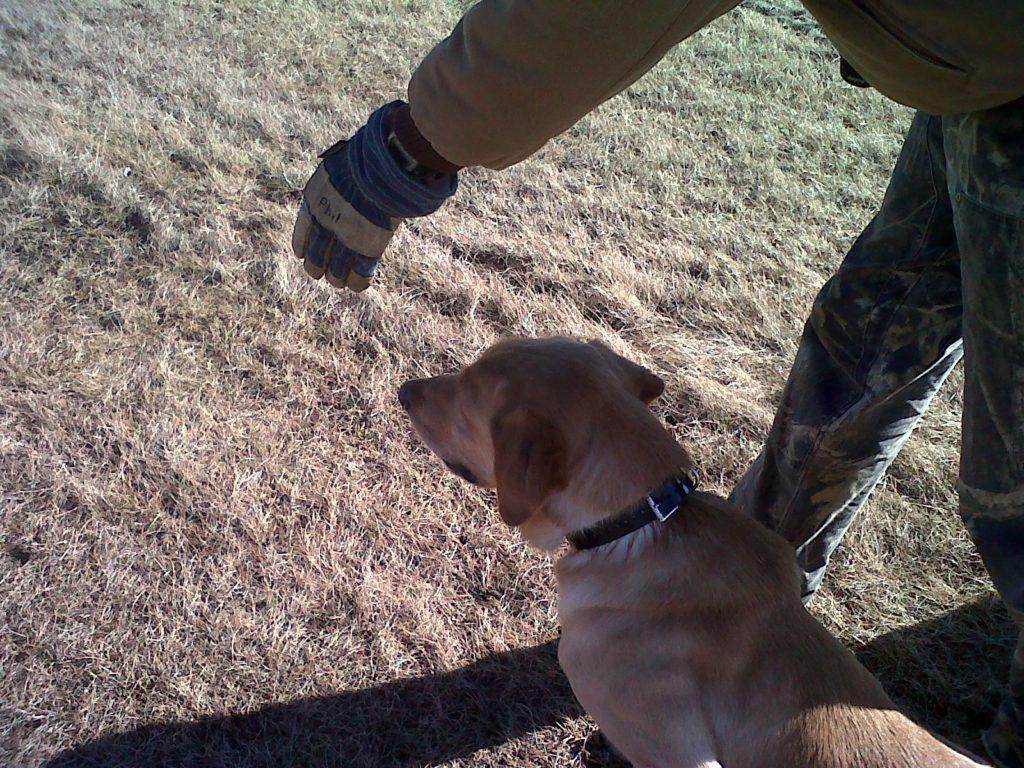
In the beginning, many people struggle with their dogs. It seems the dog is acting dumb on purpose. However, this way of thinking is not right. Most of the time the issue occurs from miscommunication and a little bit of love and care solve them. Here are some tips which will help the dog retrieve better.
- Start blind retrieve training when the dog is young.
- Always try to do the training in the early morning and evening.
- Avoid hot summer and chilly winter days for exercise.
- Keep less distraction in the field of exercise.
- Use high-quality bumpers that are highly visible to the dog.
- Carry first aid and water for the dog.
- Give every command loudly.
- Always make a hand sign with an open palm; it helps the dog understand better.
- Give the dog some treat whenever it completes a drill successfully.
- Never force or pressurize the dog for any activity.
- Positive encouragement helps the dog do more.
Conclusion
A dog is a smart animal and the best companion of a man. If trained well, they can handle difficult situations easily. People understand this fact and made dogs their companion. Even in modern days, a retriever dog can be very helpful at the time of hunting. They can go anywhere and bring the falling animal and bird to their master.
Blind retrieval is not only training for hunting, but it also makes the dog smarter and more useful. After receiving the training the dog becomes calmer and composes. It listens and follows every instruction of its owner. Go wherever the mater signals it to go. After getting this training, many dogs fetch the newspaper and other household items to the master when needed. There are many useful activities the dog can do in daily life after getting the blind retrieve training. A little love, care, and training change its personality in a positive direction.
Table of Contents

